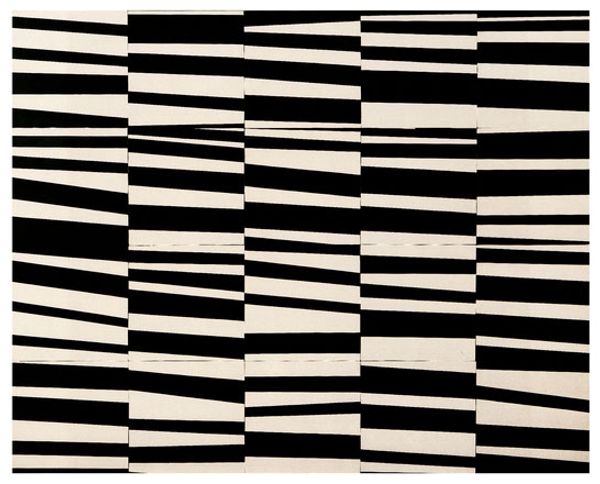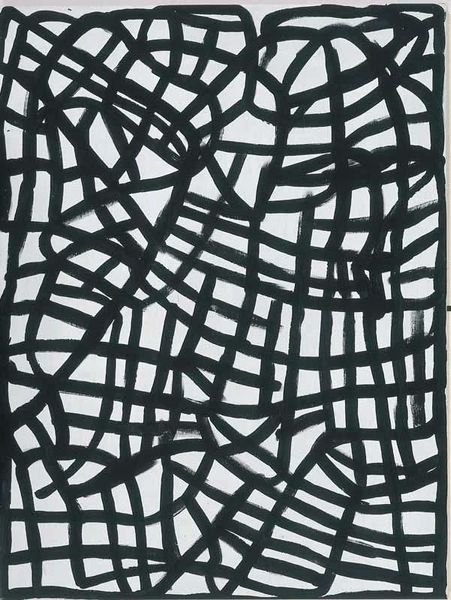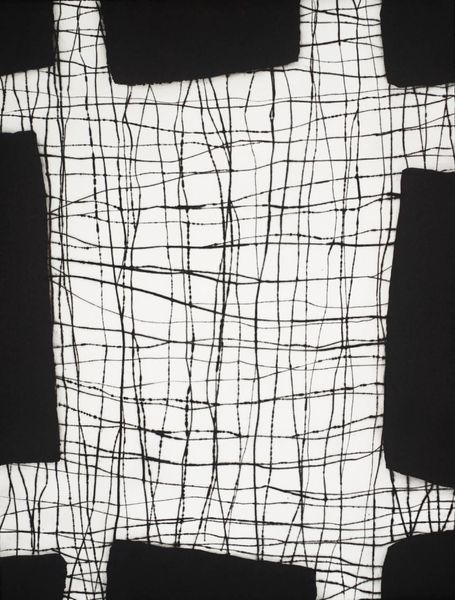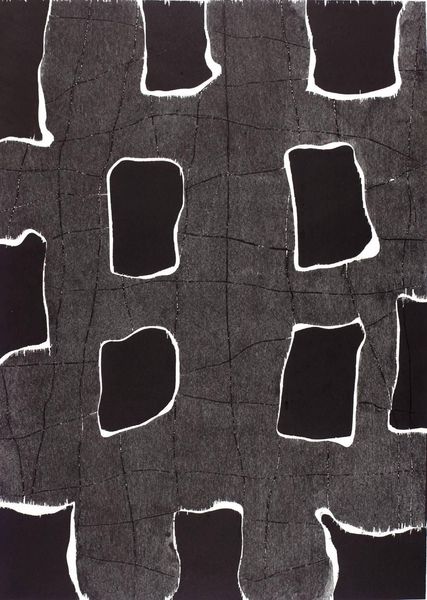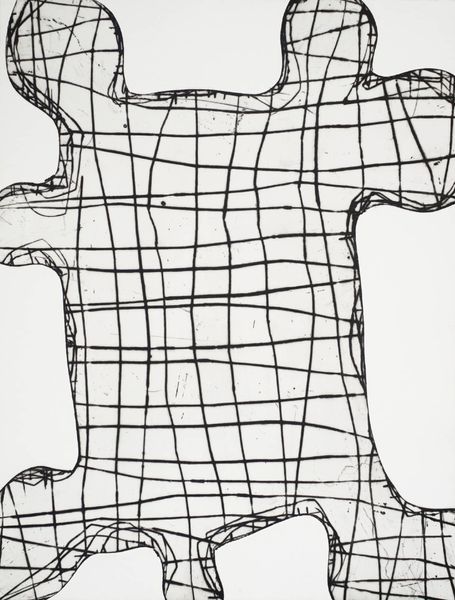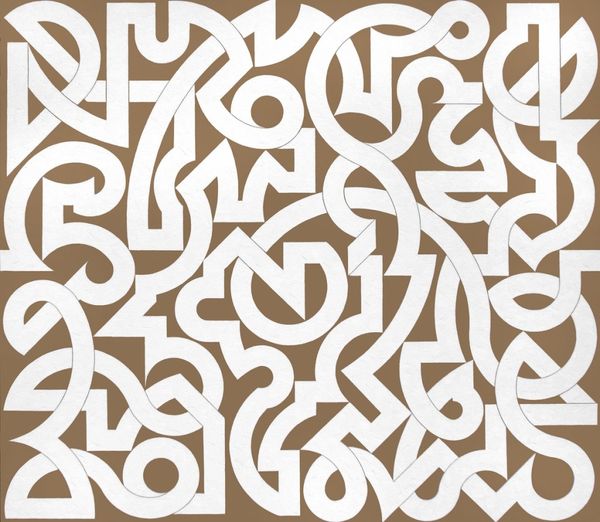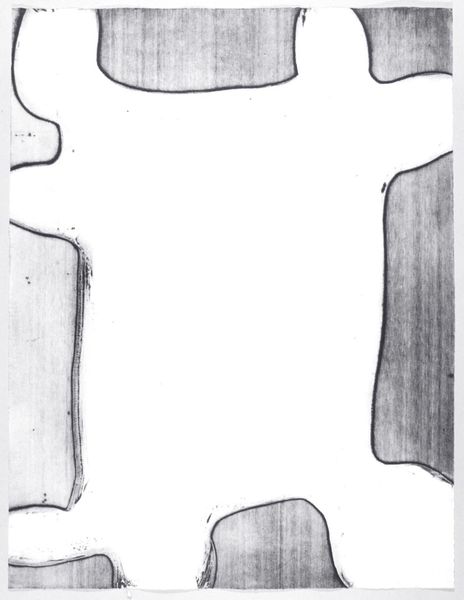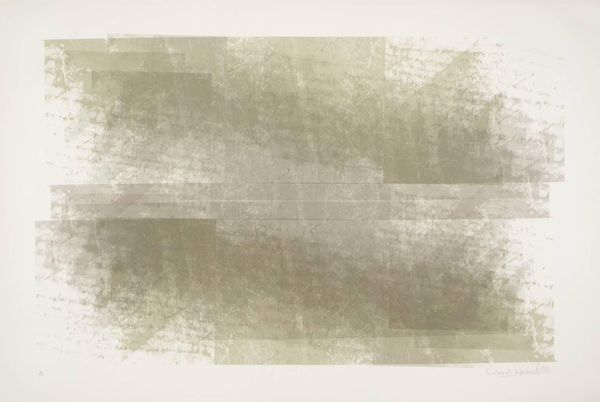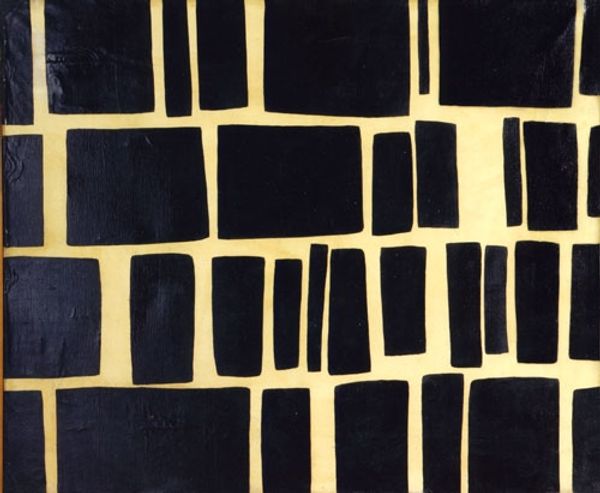
#
op-art
#
pattern
#
op art
#
geometric
#
abstraction
#
line
Copyright: Ulfert Wilke,Fair Use
Curator: Standing before us is Ulfert Wilke's "Accent on Rhythm, Anchorage," a striking piece from 1967. Editor: My immediate impression is organized chaos. The dark bars leap off the canvas. It feels both frenetic and oddly still. Curator: That perceived chaos, though compelling, reveals an intentional, tightly structured composition. Wilke is manipulating form. The relationships between these individual elements create visual complexity. Do you see a repeating pattern, or perhaps, an anti-pattern? Editor: Well, I see hints of rhythm struggling against the grid. But, considering it was made in '67, post-war anxieties perhaps influenced the creation of such patterns. Did this represent societal feelings regarding conformity or discord? I mean, how were people reacting to social upheaval while still maintaining structured lives? Curator: Fascinating idea, but such readings are ultimately contingent. Looking at the structure of the image we note this period focused heavily on abstraction and non-representation. It becomes much more useful to contemplate the arrangement and scale, or examine how that stark black-and-white interaction impacts the viewer. Editor: But doesn't this dismissal of the broader picture diminish the potency of art's communication? Ignoring social climate leaves a painting feeling divorced from tangible context. Can pure aesthetics truly exist devoid of societal bearing? Is art simply about line and space? I suspect audiences in that era would find art that challenged structure more interesting than aesthetics. Curator: Structure, though! The lines. Notice how a seemingly haphazard configuration develops intentional intervals as well as how form challenges figure-ground relationships in powerful ways! I concede however, that this could evoke questions of socio-cultural standards... It really is compelling in its complexity! Editor: Agreed! It provokes some important conversations—social impact, aesthetic form—all things that were, and are, perpetually debated. Curator: A vibrant example of a period in time reflected by lines and spaces!
Comments
No comments
Be the first to comment and join the conversation on the ultimate creative platform.

